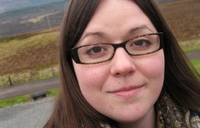Political, economic and cultural transformation of the Loango Coast during the era of the transatlantic slave trade, with particular focus on the 18th century, will be explored in the next Tubman Speaker Series talk Thursday.
Stacey Sommerdyk, a postdoctoral Fellow at the Department of History at the University of the Witwatersrand, will discuss “Cross-Cultural Exchange: The Dutch Middelburg Commercial Company on the Loango Coast, 1732 to 1796″ April 17, from 3:30 to 5pm, at 305 York Lanes, Keele campus.

While a number of previous studies of the West Central African slave trade have focused principally on the role of the Portuguese on the Angola Coast, evaluating the balance of power between Dutch and Loango Coast merchant communities presents a different trajectory in cross-cultural exchange.
Well into the 18th century, local African religious and political traditions remained relatively unchanged on the Loango Coast, especially in comparison to their southern neighbours in Angola. Drawing upon detailed records compiled by the Middelburgse Commercie Compangie (MCC), the project builds upon an original database which accounts for approximately 10,000 slaves sold by 640 identified African merchants to the Dutch Middelburg Company over the course of 5,000 transactions.
Expanding upon the work of Phyllis Martin and other scholars, Sommerdyk will highlight a distinction between the Loango and the Angola coasts by drawing attention to the absence of European credit data in the MCC slave purchasing balance sheet and exploring the difficulties involved in procuring slaves via long distance trade. While making extensive use of the Slave Voyages Database, this study also seeks to move beyond the European-focused studies of shipping patterns to begin to discover the identities of the African traders. In doing so, it provides the first comprehensive list of African merchants in the 18th century.
This list of African merchants also reinforces fragmented lists of rulers for the polities of Loango, Kakongo and Ngoyo, and also gives a more concrete picture of the role of the principal traders on the coast, Mafouks, in the 18th century.
Perhaps most importantly, Sommerdyk’s talk will draw attention to the large numbers of relatively small African investors in the trade, giving names and faces to the minor merchants of the slave trade. Consequently, African merchants stop being depicted only as amorphous interchangeable figures in the history of the transatlantic slave trade and begin to gain identities comparable to those of their European counterparts.
Before moving to South Africa, Sommerdyk obtained her doctorate at the Wilberforce Institute for the Study of Slavery and Emancipation, University of Hull, U.K., and her master’s degree at the Tubman Institute, York University. She is currently working on a book manuscript titled “Negotiating Atlantic Spaces: The Middelburg Commercial Company on the Loango Coast, 1732-1796.” She has recently published an article (with Filipa Ribeiro da Silva), “Reexamining the Geography and Merchants of the West Central African Slave Trade: Looking behind the Numbers”, in a special issue of the Journal of African Economic History. Sommerdyk’s broader fields of interest are African history, merchant communities, the Dutch trading empire, the transatlantic slave trade, Atlantic history and diaspora histories.


